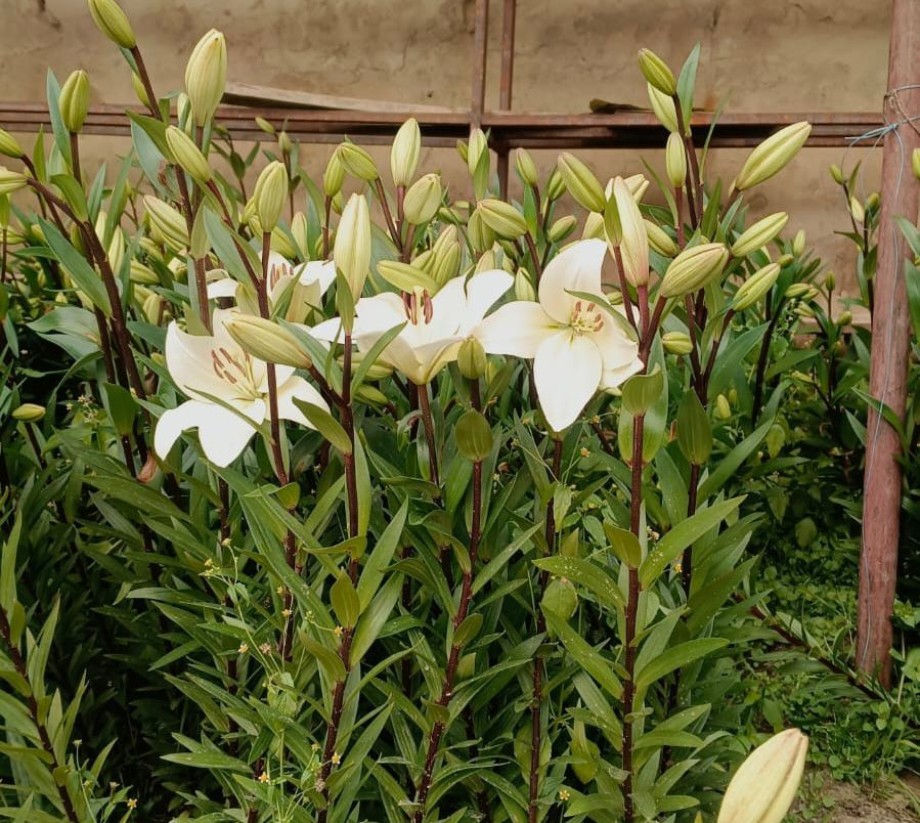Blossoming opportunities: Rigzin Tsewang’s floriculture revolution in Ladakh

In the beautiful yet challenging landscape of Ladakh, 34-year-old Rigzin Tsewang from Spituk is pioneering a new path in floriculture. With a passion for innovation and sustainability, he is leading an initiative that is not only transforming local farming practices but also opening new economic opportunities for the region.
After completing his studies in horticulture, he returned to Leh and came across Mission Floriculture, a government initiative launched by CSIR, Palampur (Himachal Pradesh). This scheme aims to promote the cultivation of high-value aromatic and floriculture crops in Ladakh and similar cold desert regions. Recognizing its potential, he decided to take part in the initiative and began experimenting with flower cultivation.
In collaboration with the Industry Department, the scheme provided seeds for flowers such as Lilium, Gladiolus, and Tulips—varieties known for their high commercial value. In 2021, he started by planting these flowers on a half-Kanal plot of land as a trial. Encouraged by the successful yield, he expanded his efforts in 2022, cultivating flowers on a larger plot of 1.5 Kanals. He also established cooperatives like Mentok Tsogspa and Ama Tsogspa in Leh district, training local farmers—especially women—on flower cultivation techniques.
A blooming market
Ladakh is home to many indigenous flowers, but the commercial market for them remains underdeveloped. The introduction of Lilium, Gladiolus, and Tulips—flower species that are relatively easy to grow and highly profitable—has created new business prospects. These flowers, imported from the Netherlands under the government scheme, are now being cultivated and sold in major cities like Delhi, Bangalore, Mumbai, and Chandigarh in collaboration with Ama Tsogspa.
According to rough estimates, the returns from floriculture are nearly double those of traditional vegetable farming. One of the key advantages of Ladakh’s agro-climatic conditions is its long summer days and short nights, which are ideal for bulb production. Lilium bulbs, in particular, are similar to onions in structure and produce seeds in large numbers, making them well-suited for large-scale cultivation.
The future of floriculture in Ladakh
Agriculture is considered a promising future for Ladakh, with great potential in floriculture, processing industries, and the cultivation of apricots, apples, seabuckthorn, and buckwheat. As the floriculture industry is still in its infancy in Ladakh, there is ample opportunity for growth, and many young entrepreneurs, including farmers and mothers dependent on agriculture, are now turning to floriculture for higher income.
One of the key objectives of greenhouse flower cultivation is to counter the downturn in the local market during the winter months. By exporting flowers from Ladakh to cities like Delhi, Chandigarh, and Mumbai, they generate income throughout the winter season. In addition, during the summer months, they profit from the influx of tourists and supply flowers for weddings, birthdays, and exhibitions, ensuring the market remains vibrant year-round.
Greenhouse flower cultivation is already being practiced in various parts of Ladakh, including Sankar, Phey, Shey, and Chuchot, with strong support from self-help groups and Ama Tsogspa. As awareness and participation grow, floriculture has the potential to become a major industry in Ladakh, bringing economic growth and sustainability to the region.
With perseverance, innovation, and community collaboration, Ladakh is well on its way to becoming a flourishing hub for high-value floriculture—one bloom at a time.





